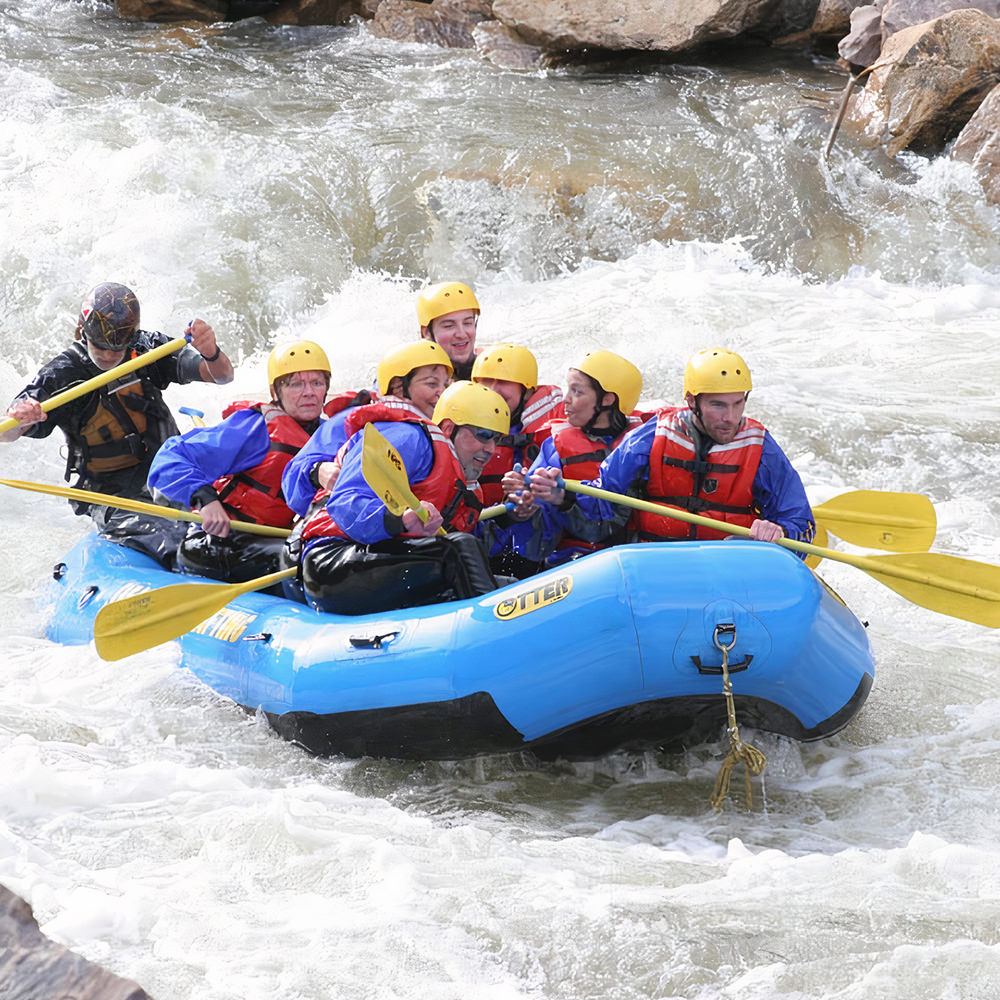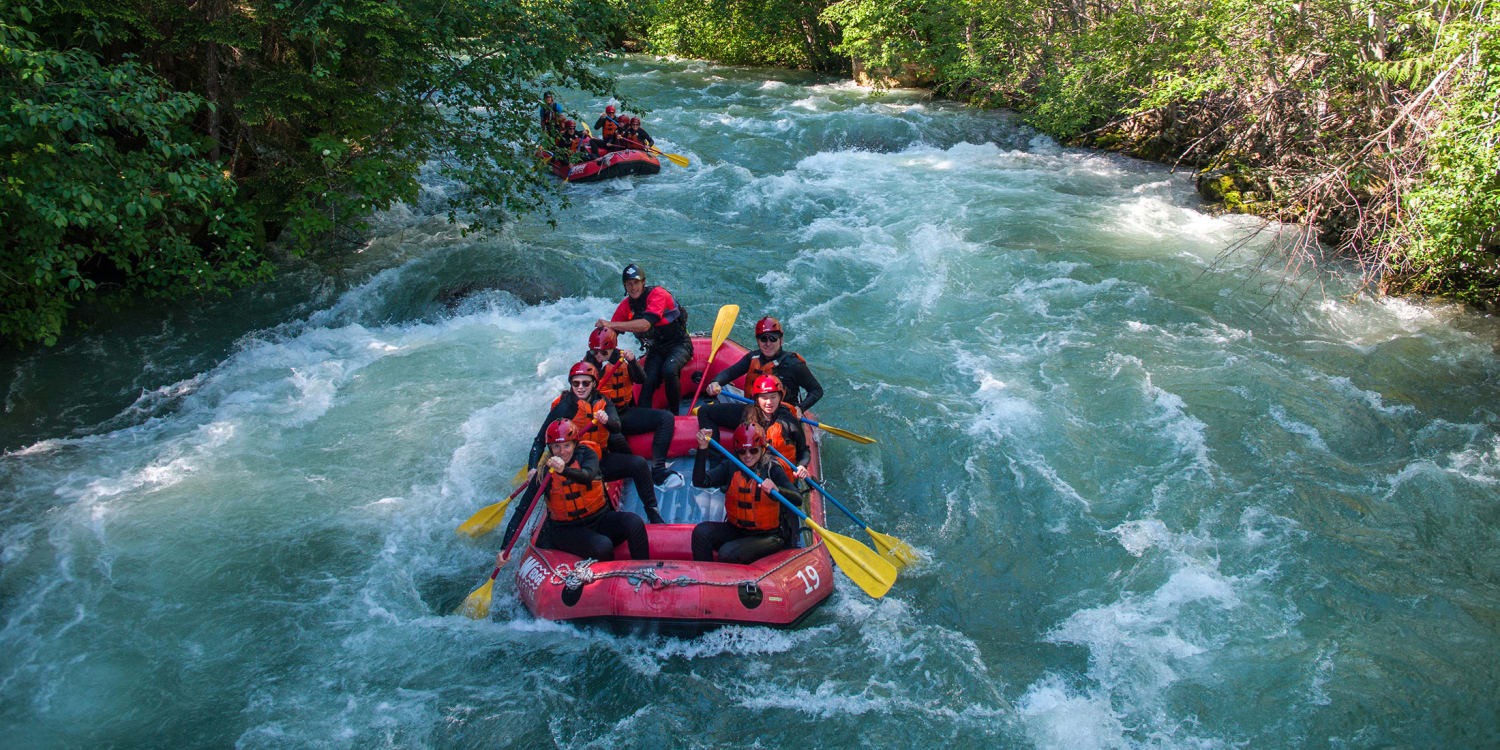Check Out Spectacular Rivers with White Water Rafting Colorado
Check Out Spectacular Rivers with White Water Rafting Colorado
Blog Article
Crucial Skills for Water Rafting
Understanding the art of water rafting needs a combination of precise abilities and expertise to browse the unforeseeable currents of rivers, making it a thrilling yet possibly hazardous task. As lovers gear up to start their next journey, it is essential to gear up oneself with necessary competencies that go beyond simply paddling. From recognizing the ins and outs of river characteristics to swiftwater rescue methods and smooth group communication, the journey down the river requires a mix of knowledge and versatility. With safety protocols serving as a keystone, participants are encountered with a multifaceted challenge that demands a thorough method and steady emphasis.
Paddling Techniques
Mastering effective paddling methods is vital for browsing water plethoras securely and efficiently. One fundamental strategy is the forward stroke, where paddlers dip the blade completely into the water and draw it back together with the raft to produce propulsion.
Apart from the forward stroke, the draw stroke is vital for making quick adjustments or drawing the raft better to an object. By putting the paddle blade perpendicular to the water's surface and pulling the water towards the boating, paddlers can effectively change the vessel's instructions. The backstroke serves as a beneficial tool for backing up or slowing down the boating when needed.
River Reading
Efficient paddling techniques, such as the forward stroke and attract stroke, play a vital duty in browsing and analyzing river currents, a skill referred to as river reading. River analysis entails the ability to analyze the speed, deepness, and instructions of the water circulation to make informed choices while navigating rapids. By recognizing exactly how the water moves around challenges and through different channels, rafters can choose the very best course to securely traverse the river.
One key facet of river analysis is identifying different sorts of currents, consisting of eddies, waves, and hydraulics, and comprehending exactly how they can influence the boating. Eddies, for example, are locations where the water flows in a round movement, commonly giving opportunities for remainder or critical maneuvers. Waves can show the visibility of barriers or rocks, needing fast modifications in paddling method. Hydraulics, generally known as "holes," are areas where water recirculates back upstream, posturing prospective threats to rafts.
Mastering the ability of river analysis is vital for delightful and secure rafting experiences, making it possible for paddlers to navigate tough waters with self-confidence and precision.

Swiftwater Rescue
Understanding swiftwater rescue techniques is important for water rafting fanatics to respond effectively in emergency situations on fast-flowing rivers. Swiftwater rescue involves a collection of specialized abilities and knowledge intended at securely drawing out individuals from swift-moving water. One key facet of swiftwater rescue is recognizing the risks present in fast-flowing rivers, such as strainers, undercut rocks, and strong currents, to plan and execute effective rescue operations.
Correct equipment is essential for swiftwater rescue, including toss bags, rescue ropes, headgears, and individual flotation gadgets. Rafting fanatics should be adept at using this equipment in high-stress situations to make certain the safety of themselves and others. Additionally, swiftwater rescue techniques frequently include teamwork and control among rafters to execute complex rescue maneuvers effectively.
Learning swiftwater rescue is extremely recommended for individuals participating in water rafting activities, as it equips them with the needed abilities to handle emergencies visit the website quickly and successfully. White Water Rafting Colorado. By recognizing and exercising swiftwater rescue strategies, water rafting lovers can improve their security which of their fellow rafters on tough river expeditions
Group Interaction
Reliable team effort in water rafting counts heavily on seamless interaction among group participants to guarantee coordinated and safe navigation with difficult river problems. Succinct and clear communication is critical for the success of any rafting expedition. Team participants have to be able to successfully communicate essential information such as paddling commands, warning signals, and navigational guidelines.
In the hectic and typically uncertain atmosphere of river rafting, punctual and precise communication can suggest the difference between a potential catastrophe and an my link effective run - White Water Rafting Colorado. Each staff member plays a crucial duty in the overall communication process, whether it be listening diligently to the overview's instructions, passing on info to other paddlers, or signaling for help when needed
Developing a common language and interaction system before hitting the water is vital. This guarantees that everyone is on the very same web page and understands exactly how to communicate effectively during the rafting journey. By cultivating a wikipedia reference society of open interaction and shared regard, rafting teams can improve their performance and safety on the river.

Security Protocols
In the context of water rafting, the foundation of group interaction developed throughout expeditions is additional enhanced through strict adherence to safety and security procedures. Safety and security procedures are vital in making certain the health of both rafters and guides during water rafting trips.
One more key safety method is the comprehensive briefing offered by overviews before beginning on a rafting journey. By purely adhering to these security procedures, water rafting expeditions can be both awesome and safe for all individuals included.
Verdict
To conclude, mastering vital skills for water rafting is crucial for a delightful and secure experience on the river. Paddling strategies, river reading, swiftwater rescue, team interaction, and security methods are all necessary components that add to an effective rafting trip. By refining these abilities, rafters can browse challenging waters with confidence and ensure the security of themselves and their group participants.
Grasping the art of water rafting needs a mix of precise abilities and knowledge to navigate the unforeseeable currents of rivers, making it a thrilling yet possibly unsafe task. By positioning the paddle blade vertical to the water's surface and drawing the water towards the boating, paddlers can properly change the vessel's direction.Recognizing swiftwater rescue methods is critical for water rafting enthusiasts to react properly in emergency scenarios on fast-flowing rivers.Efficient teamwork in water rafting relies heavily on seamless interaction among group members to make certain collaborated and safe navigating with tough river problems.In verdict, grasping important skills for water rafting is important for a pleasurable and risk-free experience on the river.
Report this page